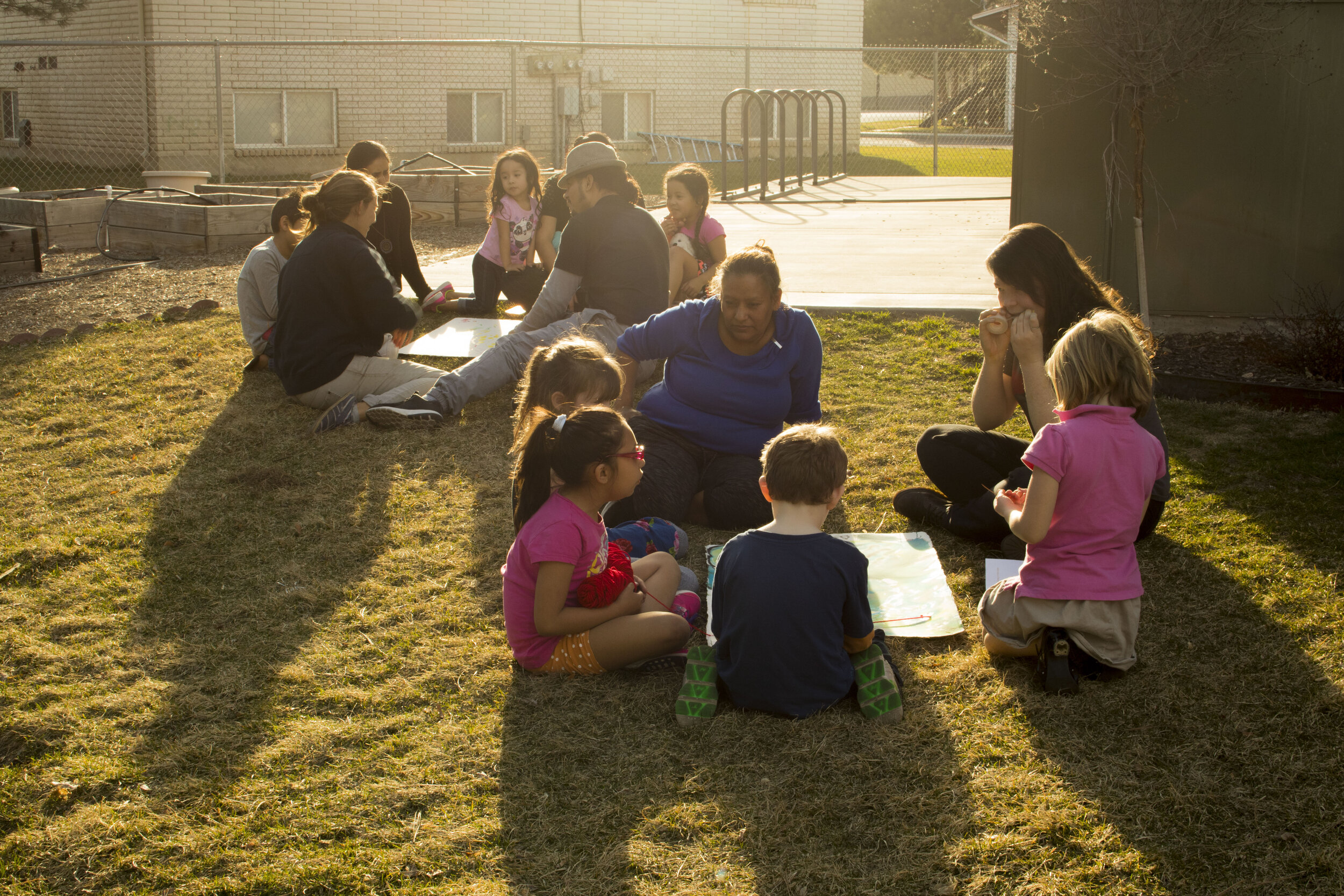TEACHING PHILOSOPHY
What I say and how I say it, the environment I create, and every interaction I have with my students has an effect upon them and me. I believe that it is humanity’s purpose and deepest biological and spiritual nature to humanize ourselves and each other as individuals and communities.
Humanization is whatever makes us more fully human and makes us see each other as more fully human. I have identified the principles of connection, belonging, compassion, and creative agency to better recognize humanizing practices in teaching. Love is the motivation for all humanizing action. It is a risk that must be taken to be more fully human.
Creativity, like love, is intrinsically, but not uniquely, human. Facilitating creativity for my students and myself is deeply humanizing. Creativity is one of the main ways along with laughter, affection, breathing, and exercise that humans defuse stress, releasing in a positive way the physiological energy or tension from stress hormones.
Our physical environment has a profound effect upon our mental state, creativity, and interactions. Studies show that the color green results in greater creativity. I carry a plant with me to each classroom I visit and my own space will have lots of plants. I keep the windows open when safe and possible. I take my students to work and be outside as much as reasonably possible.
As a teacher I am a model leader that sees the individual, contributes to a cohesive community, and protects a calming, invigorating, and equitable learning environment. Model leadership is loving, anchored in humility, proximity, and vulnerability. Maya Angelou said, “You do the best you can until you know better and then you do better.” A leader should be vulnerable at times and admit mistakes, learn from those mistakes, apologize if necessary, and change, modeling a growth mindset. I recently saw a music teacher remind her class of this value when she asked her third grade students, “Is it okay to make mistakes?” They responded energetically, Yes!” “Do we need to fix the mistakes?” And with the same energy they chorused, “Yes!” I emphasize this value in my classroom by pointing out art mistakes I make and how I then learn from them.
Once a first grade student was overwhelmed by turning a scrap into a picture by drawing it. I knelt down next to her “It’s hard when we don’t know what to do. Can I help you think of some ideas?” By the end of the class she had drawn to fill the whole page a picture imagined from that scrap.
Another part of being a model leader as a teacher is proximity. Proximity is both a physical and mental effort in teaching. As I frequently circle my classroom I check in with each student. During instruction that proximity is also prioritized by checking for understanding, “Why do we need to push the wax down really hard in making a wax resist painting?” Effective leadership is humble and open to feedback. Communication needs to go both ways. Each week I give students the chance to anonymously write down feedback, “One thing I wish my teacher knew was...” My relationship with them as a leader is by that nature always adjusting and adapting to them.
Humans are biologically wired for connection, physically and emotionally: we are a social species. We crave belonging (a result of reliable connection). Compassion enables connection and connection inspires compassion. Community is built on collaboration through shared goals, music, and humor. I have a humor board in my room where throughout the year we collect quotes, jokes, memes. I watch a weekly funny video with my class. We each contribute to a playlist to listen to while we work.
Each individual is a unique, physical, mental, emotional, spiritual, social being. I recognize that truth of myself and each and every student. Dr Joanne MacLennon describes it as an “unconditional positive regard for each child”. Each week I make “shoutouts” to students who have exceptional progress or shown sincere diligence. I am dedicated to knowing each students’ name, noticing their needs in the classroom and in their learning. I validate emotions, ask how students are doing and listen to the responses, and express love.
COLLECTED THOUGHTS
PAULO FREIRE
“I do not accept. . . history as determinism. I embrace history as possibility [where] we can demystify the evil in this perverse fatalism that characterizes the neoliberal discourse in the end of this century. “
Build it.
It all begins with an idea. Maybe you want to launch a business. Maybe you want to turn a hobby into something more. Or maybe you have a creative project to share with the world. Whatever it is, the way you tell your story online can make all the difference.
Grow it.
It all begins with an idea. Maybe you want to launch a business. Maybe you want to turn a hobby into something more. Or maybe you have a creative project to share with the world. Whatever it is, the way you tell your story online can make all the difference.
